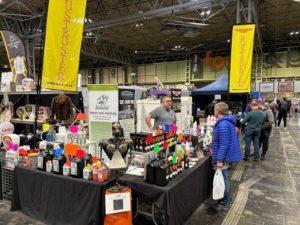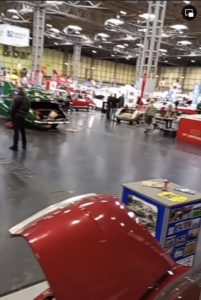The Practical Classics Restoration Show 2024 drew an impressive crowd of 26,912 enthusiasts, but beneath the surface excitement lies a crucial question: was it a true success? Delving deeper into the dynamics of the classic car restoration scene reveals critical points intersecting with the broader economic cycle, impacting both attendees and traders alike.

One central issue facing enthusiasts is the diminishing “plaything budget.” As the cost of living rises, people find themselves allocating less discretionary income towards hobbies like restoring classic cars. The enduring allure of reviving vintage automobiles competes with the practicalities of everyday expenses, causing enthusiasts to reassess their spending priorities.
Moreover, the relentless push towards electric vehicles casts a shadow over the classic car community. While vintage automobiles hold a timeless appeal, the global shift towards sustainable transportation options presents a challenge. As the industry pivots towards electric, traders and exhibitors at restoration shows must navigate an uncertain landscape, grappling with questions of relevance and future demand.
For traders and exhibitors, the equation is equally complex. High costs associated with participating in events like the Practical Classics Restoration Show raise the stakes. The return on investment becomes a critical consideration, especially when weighed against the backdrop of shrinking consumer budgets and evolving market preferences.
Despite these challenges, the show boasted an impressive array of pleasing vehicles on display, showcasing the passion and craftsmanship inherent in classic car restoration. However, a notable shortfall emerged in the availability of spare parts—a crucial component for enthusiasts looking to breathe new life into vintage vehicles. The scarcity of spares underscores a broader issue within the restoration community, highlighting the need for increased accessibility to essential components.
Meanwhile, rising admission prices, coupled with steep fees for car parking and inflated costs for food and beverages, threaten to price out some attendees. As the overall cost of attendance escalates, enthusiasts must carefully weigh the value proposition against their financial constraints.
For traders and exhibitors, the financial calculus is equally daunting. High overheads limit their ability to offer competitive deals, potentially eroding their profitability and long-term viability. The symbiotic relationship between attendees and traders hinges on striking a delicate balance between affordability and sustainability.

Sunday at 3pm, not many people about
In conclusion, while the Practical Classics Restoration Show 2024 attracted an impressive turnout, its success cannot be measured solely by attendance figures. The challenges facing both enthusiasts and traders underscore the need for a nuanced approach to navigating an increasingly complex landscape. By addressing issues such as affordability, spare parts availability, and the evolving automotive landscape, the restoration community can chart a course towards a more sustainable and inclusive future.




